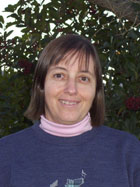Lecture to explore statistical support for psychic powers
A professor of statistics from the University of California, Davis, will discuss the surprising degree that scientific testing corroborates the existence of certain psychic abilities, in a talk at 7 p.m. Thursday, Jan. 22, in the Keck Classroom (G52) of Pettengill Hall.
Titled Investigating Psychic Phenomena with Statistics, Jessica Utts’ lecture at Bates is co-sponsored by the psychology and mathematics departments, and is open to the public at no charge.
Utts is an expert on statistical issues related to parapsychology, the scientific study of purported abilities such as telepathy and precognition. In the mid-1990s, Utts took part in an American Institutes of Research evaluation of the Central Intelligence Agency’s “Star Gate” program, which investigated possible intelligence uses for extrasensory perception.
The panel’s well-publicized conclusion was that experiments had shown statistically significant evidence that could support the existence of parapsychological abilities (read her report here: http://anson.ucdavis.edu/%7Eutts/air2.html).
“The results of the experiments are so intriguing,” Utts says. “If similar data had been obtained in a less controversial area, there would be no problem with accepting that the phenomena are real. But in this field, the strong statistical results simply lead to more questions.”
“We have many more questions than answers, and many of the questions are amenable to statistical analysis.” For instance, she continues, “How can the data be explained? If psychic abilities do exist, does everyone have them? Are the results correlated with other physical or psychological factors?”
Utts has appeared on numerous television programs, including ABC’s 20/20 and Nightline, Larry King Live and CNN Morning News, discussing topics ranging from parapsychology to luck and lotteries. She is the author of Seeing Through Statistics (Duxbury Press, 1999).
Although Utts is well-aware of the risks to credibility posed by research in a field like parapsychology, she says that mass-media coverage sensationalizes scientific research in all manner of disciplines.
“As a statistician, I often read newspaper accounts of studies, then go check the original journal article,” she says. “In most cases, only the most sensational results from the study are reported, leading to a distorted view of what the research actually showed.”
In the upcoming edition of Seeing Through Statistics, Utts will include a CD with 20 examples of such reporting. The CD will include the news stories and the original journal articles (none involving parapsychology) so readers can compare them.



